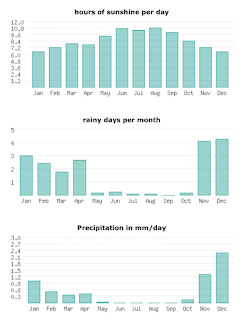I just came across this amazing object. I will give first the official description and interpretation...Then I will give my own...You can decide yourself which is better...
Official description:
A Sumerian or Elamite Copper Bowl. Early 3rd Millennium B.C.E., H. 9.2 cm., D. 16.2 cm.
"The cup was made from arsenic bronze and was cast in a mold. The relief animals could have been made separately and soldered onto the surface of the cup"
"The decoration is organized in two stacked friezes of animals going [in opposite directions]: the upper register is composed of three bulls separated by lions, while the lower register contains two ibexes alternating with spotted panthers [leopards]"
Official interpretation:
"Oxen and ibexes were important animals in Mesopotamian economy, while the wild beasts were the favorite targets of hunters..."
"...The size of this piece, its artistic merit, and the selected material as well as the subject indicate that it belonged to a temple treasure or to the display plate of a Mesopotamian dignitary"
That's it...
Bibliography
MÜLLER-KARPE M., Metallgefässe im Iraq I (Von den Anfängen bis zur Akkad-Zeit), Stuttgart, 1993, p. 86 ss. (forme 11, I “Bodenschale”), pp. 235-237, n. 1588, pl. 142.
VAN ESS M. - PEDDE F., Uruk, Kleinfunde II, Mainz on Rhine, 1992, p. 18, n. 109, pl. 19.
Sooooo...What is the meaning of this. The bowl symbolises climatic year in the area of southern Iraq (Sumer), western Iran (Elam), which is divided into hot/dry half (Apr/May - Oct/Nov) and cool/wet half (Oct/Nov - Apr/May)
How do I know this? Because of the choice of the animals depicted on the bowl (nothing to do with economy or hunting), and because of the way they are grouped and oriented (which is not random at all).
It's all to do with animal calendar markers. Basically, the earliest calendars were based on behavior of animals and their annual lifecycles: mating and birthing, which happen every year at the same time.
So you could say:
When wild cattle start calving, which is always in Apr/May.
When lions start mating, which is always Jul/Aug.
When wild goats start mating, which is always in Oct/Nov.
When leopards start mating, which is always in Jan/Feb.
The top animal frieze consists of bulls and lions.
Bull, animal calendar marker for Apr/May. Beginning of summer.
Lion, animal calendar marker for Jul/Aug. Beginning of autumn.
Together they mark hot/dry season (Apr/May-Oct/Nov) = summer (May,Jun,Jul), autumn (Aug,Sep,Oct)
The bottom animal frieze consists of ibexes and leopards.
Ibex, animal calendar marker for Oct/Nov. Start of winter.
Leopard, animal calendar marker for Jan/Feb. Start of spring.
Together they mark cool/wet season (Oct/Nov-Apr/May), winter (Nov,Dec,Jan), spring (Feb,Mar,Apr)
The animals in the two friezes walk in opposite directions. To symbolise opposite climatic conditions in the two halves of the climatic year in the area where this bowl was made:
bull, lion = summer, autumn = hot, dry
goat, leopard = winter, spring = cool, wet
So there you have it. Climatic year depicted through animal calendar markers which symbolise 4 seasons, which are grouped into 2 cool/wet half and 2 hot/dry half...
The circular bow and the endless procession of the animals symbolise cyclical nature of annual climate changes...
I wrote another article "Symbols of the seasons" about animal symbols of the seasons before. In it I talked about the symbols of the seasons still found in our zodiac today:
ram-spring-lamging
bull-summer-calving
lion-autumn-mating
goat-winter-mating
As you can see, 3 out of 4 animal calendar markers are the same. But it seems that in Neolithic, Bronze and Iron Age Iran, it was leopard which was the symbol of spring. And which together with wild goat marked the cool/wet/fertile half of the year. You can read more about goat-leopard animal calendar markers for winter and spring in my post "A vessel from Tepe Hissar" about this amazing artefact...
Which leads me to believe that this bowl is of southern Iranian, Elamite origin...
Anyway, these are just some of the commonly used animal calendar markers. Many more are found all over Eurasia and North Africa, and basically form base layer of all known religious iconographies...And can be used to interpret most of the ancient artifacts with animal images...
To read more about ancient animal and plant calendar markers, start here…then check the rest of the blog posts related to animal calendar markers I still didn't add to this page, and finally check my twitter threads I still didn't convert to blog post...I am 9 months behind now...
Bowl bibliography:
MÜLLER-KARPE M., Metallgefässe im Iraq I (Von den Anfängen bis zur Akkad-Zeit), Stuttgart, 1993, p. 86 ss. (forme 11, I “Bodenschale”), pp. 235-237, n. 1588, pl. 142.
VAN ESS M. - PEDDE F., Uruk, Kleinfunde II, Mainz on Rhine, 1992, p. 18, n. 109, pl. 19.










No comments:
Post a Comment